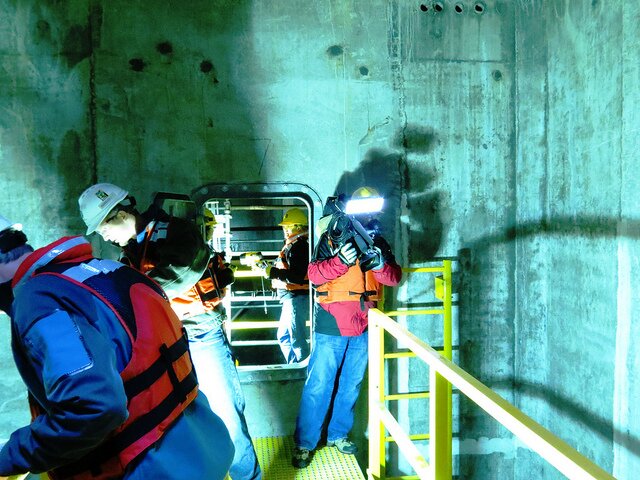
KOMO News has more allegations from a former inspector, who says that the construction quality of the pontoons for replacement 520 bridge make it a “disaster waiting to happen.” His fate is instructive, especially when it comes to the state Department of Transportation’s response to KOMO inquiries.
WSDOT says, for instance: “WSDOT’s SR 520 construction contracts include multiple requirements for Quality Assurance (QA) managers and other Quality Assurance staff.” That sounds reassuring, but when you read their documentation, you discover that construction firm Kiewit, the “Design-Builder,” is responsible for all “QA and QC for design.”
WSDOT provides Quality Verification (QV) staff, but they get to see the finished results, when there’s significantly more at stake in ordering Kiewit to redo a piece. In this case, with cracks–and leaks–appearing in the pontoons, Kiewit is being asked to fix them. It is not clear how the firm can “fix” instances of the wrong rebar being used, misplaced, or left out entirely.
How this process seems to have played out is that the whistleblowing QA inspector was hired by a subcontractor to Kiewit to oversee construction. After he began writing up non-compliant construction methods, he was reprimanded, he says, and finally laid off after Kiewit complained about his sticklerism. (This is a similar dynamic reported by building inspectors who report shoddy condo construction. Your dance card empties out.)
WSDOT, troublingly, seems unhumbled by an August 2012 performance audit (pdf) that noted: “In general, it appears the Quality Management Plan is not being adhered to by KG and not being enforced by QA or QV.”
This all follows on KOMO’s earlier reporting that two experts agreed the first six pontoons should be “do-overs.” KOMO’s watchdogging had already gotten a promise from Governor Gregoire that an independent expert panel would review the pontoons. (In the Seattle Times, Secretary of Transportation Paula Hammond seemed impervious to alarm, pooh-poohing the issue of cracks in the pontoons: “I have no reason to believe we are going to reject pontoons.”)
Fixed and problem solved? KOMO’s Problem Solvers have since discovered that concrete in the next cycle of pontoons is cracking, as well.
Finally, you might ask what the hurry is? WSDOT has adopted a furious pace in shipping the pontoons, despite that fact that $1.4 billion in funding for the project remains to be found. Despite predicting traffic volumes of between 90,000 and 100,000 cars per day in the first year of tolling on 520, WSDOT reported that an average of 63,500 cars crossed the bridge weekdays, January to June 2012.
A recent budget update sliced $522 million from the project’s original $4.65 billion price, reducing it to $4.1 billion, which should help slightly with subpar toll revenue. But ultimately, moving money from pot to pot leads to stories like these: WSDOT is also said to have reduced the amount it was to pay MOHAI for its land to $4 million from $18 million (when I asked for details, a WSDOT communications officer told me she’d get back to me after a meeting on that topic, and did not).